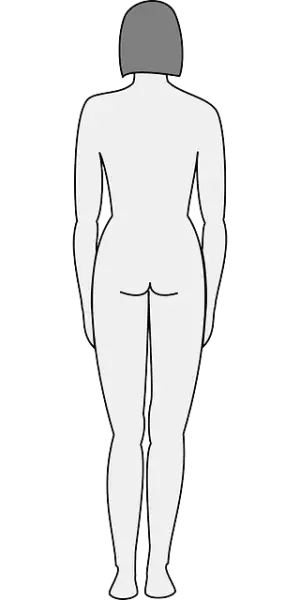TL;DR: Body Sculpting Treatments in Modern Times
Body sculpting encompasses various medical procedures leveraging advanced technology for fat reduction, skin tightening, and collagen stimulation. Modern non-invasive methods like HIFU, RF, and electromagnetic energy applications offer precise, minimally invasive solutions with quicker recovery times compared to traditional methods. Innovations such as Virtual Reality (VR) and Augmented Reality (AR) enhance patient engagement and outcomes, while Artificial Intelligence (AI) and 3D printing promise personalized, safer, and superior body sculpting treatments in the future. Choosing the right treatment requires understanding individual goals and skin type, with professional consultation key for tailored guidance.
The quest for achieving a sculpted body has evolved dramatically with the advent of technology. From non-invasive treatments like HIFU and RF to cutting-edge innovations in laser and virtual reality, modern body shaping offers diverse options. This comprehensive guide explores various body sculpting treatments, delving into their mechanisms, safety, and efficacy. Discover how technology is transforming cosmetic procedures, providing individuals with more accessible and personalized paths to achieving their desired physique.
Understanding Body Sculpting: Unveiling the Concepts and Goals

Body sculpting is a collective term for various medical procedures aimed at reshaping and enhancing specific areas of the body. These treatments leverage advancements in technology to offer precise, minimally invasive solutions for individuals seeking to improve their physical appearance and boost self-confidence. The core concepts behind body sculpting involve contouring, reducing excess fat, tightening skin, and promoting collagen production to create a more defined, sculpted silhouette.
The ultimate goals of these procedures are to provide patients with improved body aesthetics, enhance overall body composition, and offer long-lasting results. Modern technologies such as high-intensity focused ultrasound (HIFU), radiofrequency (RF), and electromagnetic energy applications enable targeted treatments that minimize procedural time, recovery periods, and potential side effects compared to traditional methods. By understanding these concepts, individuals can make informed decisions about which specific body sculpting treatments align best with their goals and lifestyle.
The Rise of Technology in Cosmetic Procedures

Non-Invasive Body Shaping Treatments: A Comprehensive Overview

Non-invasive body shaping treatments have emerged as a game-changer in the aesthetic industry, offering effective and safe ways to achieve desired body contours without surgical interventions. These cutting-edge procedures leverage technology to target specific areas of fat reduction or muscle toning, providing individuals with more options for achieving their ideal bodies. One popular non-invasive method is CoolSculpting, which uses cryolipolysis to freeze and eliminate fat cells, leading to noticeable results over time. Another innovative approach is Emsculpt Neo, combining electromagnetic energy with radiofrequency to stimulate muscle contractions and burn calories.
Laser-based body sculpting treatments have also gained popularity due to their precision and minimal downtime. These technologies, such as Laser Liposuction, employ focused light beams to melt away fat and tighten skin, resulting in slimmer profiles. Additionally, high-intensity focused ultrasound (HIFU) treatments offer a non-surgical alternative for lifting and toning the skin, addressing concerns like saggy skin or cellulite. With ongoing advancements, individuals can now access diverse body sculpting treatments tailored to their specific needs and preferences, ensuring effective and safe transformations.
High-Intensity Focused Ultrasound (HIFU): Targeted Fat Reduction

High-Intensity Focused Ultrasound (HIFU) is a revolutionary non-invasive body sculpting treatment that has gained popularity in recent years. This technology uses high-energy sound waves to target and break down fat cells, leading to significant reductions in localized fat deposits. HIFU works by precisely delivering heat to the subcutaneous layer, effectively destroying fat cells without damaging surrounding tissue. The procedure is often described as comfortable, with minimal downtime, making it an attractive option for individuals seeking targeted fat reduction.
Unlike traditional liposuction, HIFU offers a more accessible and less invasive approach to body contouring. This treatment can target specific areas like the abdomen, love handles, thighs, and buttocks, providing patients with improved body shape and confidence. With its ability to pinpoint accuracy and minimal side effects, HIFU is a safe and effective choice for those looking to achieve their desired physique without surgery.
Emulsifying and Liposuction Techniques: Enhancing Body Contouring

Radiofrequency (RF) Technology: Stimulating Collagen for Firming

Radiofrequency (RF) technology has emerged as a popular non-invasive method for body sculpting treatments, offering a safe and effective way to tighten and firm skin. This advanced technology works by emitting low-level radio waves that penetrate the skin’s deeper layers, stimulating collagen production. Collagen is a natural protein that provides structure and elasticity to our skin, making it an essential component in achieving a youthful appearance.
When RF energy is applied to the skin, it heats up specific areas, triggering a biological response. This results in the contraction of existing collagen fibres and the formation of new ones, leading to improved skin texture and a more defined contour. RF treatments are non-surgical, pain-free, and suitable for various body areas, making them a preferred choice among individuals seeking body sculpting without incisions or lengthy recovery periods.
Laser-Assisted Body Sculpting: Precision and Safety

Laser-assisted body sculpting has gained popularity as a non-invasive body shaping treatment, offering precise and safe results. This advanced technology utilizes focused laser energy to target and break down adipose tissue (fat cells), leading to inch loss and improved body contouring. Unlike traditional liposuction, laser treatments are often less painful, with shorter recovery times, making them an attractive option for those seeking body sculpting without surgery.
The precision of laser technology allows for targeted treatment of specific problem areas, ensuring minimal damage to surrounding healthy tissue. Advanced cooling mechanisms further enhance safety by protecting the skin and subcutaneous structures from excessive heat. As a result, patients can experience significant fat reduction and improved body definition with minimal downtime or side effects, making it an appealing choice among various body sculpting treatments.
Virtual Reality and Augmented Reality in Body Shaping

Virtual and Augmented Reality (VR/AR) technologies are transforming the way we approach body shaping treatments, offering immersive experiences that enhance patient engagement and outcomes. By creating realistic simulations, VR can transport individuals into a desired post-treatment state, allowing them to visualize and appreciate the potential results. This psychological aspect of seeing yourself in a slimmer, more confident body can be a powerful motivator for patients, encouraging adherence to treatment plans.
AR, on the other hand, overlays digital information onto the real world, providing an interactive experience. In the context of body sculpting, AR can guide users through exercises or postural adjustments, offering real-time feedback and corrections. This technology enables individuals to engage in targeted, precise movements, optimizing the benefits of their body shaping treatments and contributing to more effective results.
Future Trends: AI, 3D Printing, and Personalized Body Sculpting

The future of body sculpting treatments looks promising, with advancements in technology like Artificial Intelligence (AI) and 3D printing. AI is revolutionizing personalized medicine by analyzing vast datasets to predict outcomes and tailor non-invasive body shaping procedures to individual needs. Using machine learning algorithms, these systems can identify problem areas and suggest targeted interventions, ensuring maximum effectiveness for each patient.
Furthermore, 3D printing is transforming the landscape of medical devices and implants, offering a new level of customization in body sculpting. This technology enables precise, patient-specific designs for surgical guides, implants, and even custom prosthetics. By integrating AI with 3D printing, healthcare professionals can offer personalized body sculpting treatments that are more efficient, safer, and aesthetically pleasing than ever before.
